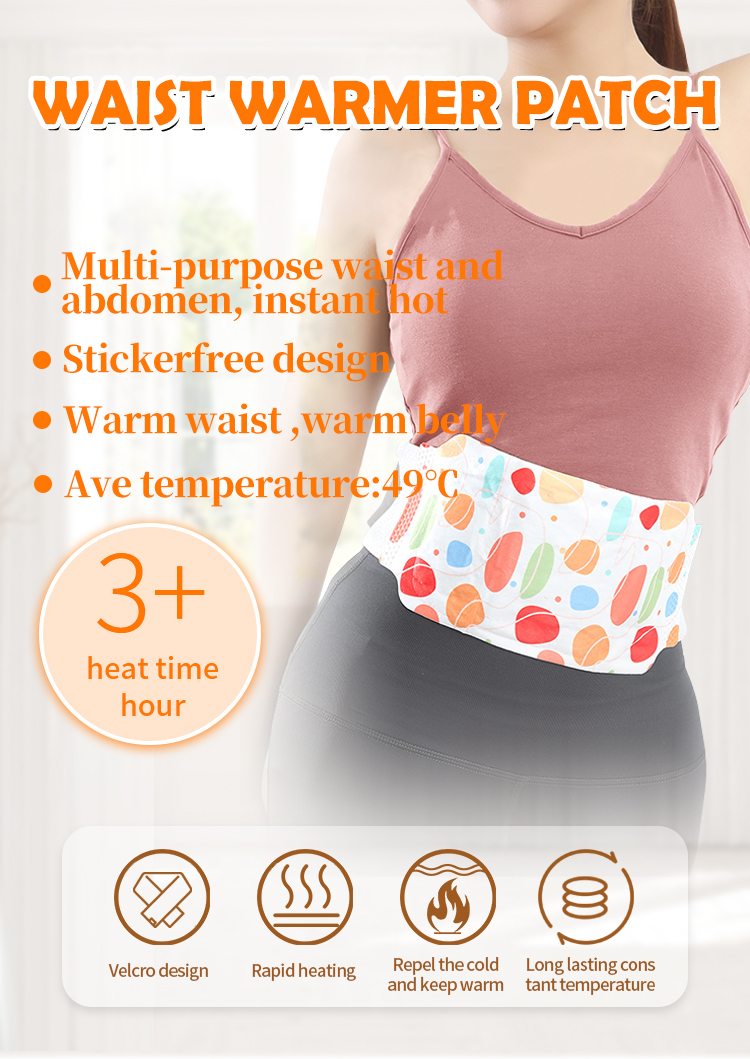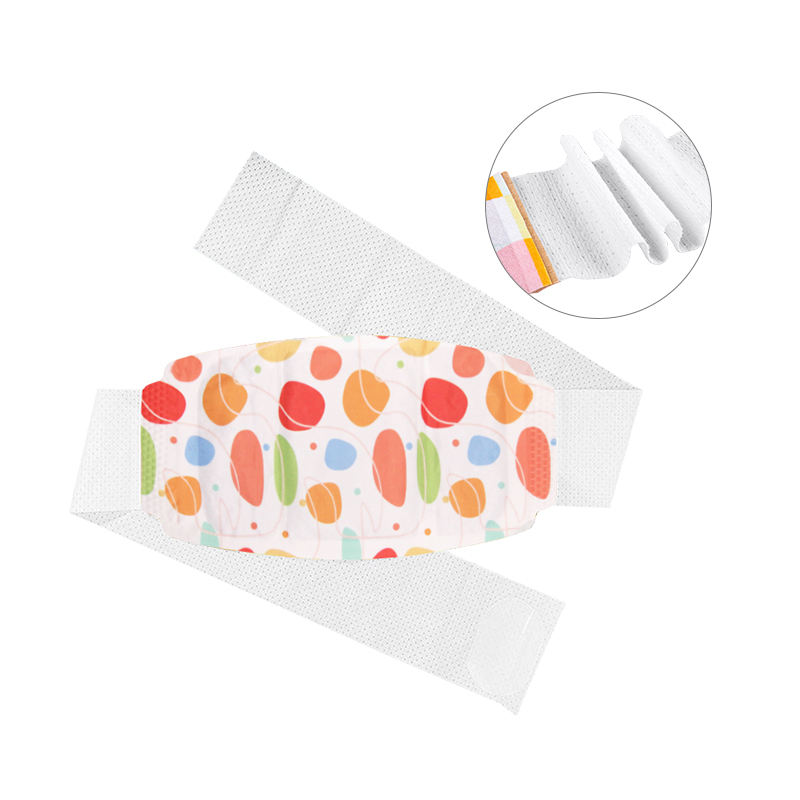The Importance of Quality Control in Waist Warmer Patch OEM Production
Quality control (QC) is a fundamental aspect of manufacturing, especially in the production of wellness and health products like waist warmer patches. Ensuring high-quality standards can distinguish a reputable waist warmer patch OEM from its competitors and is crucial for brand credibility, safety, and customer satisfaction. By understanding the critical role of quality control in waist warmer patch manufacturing, brands can better navigate partnerships with OEMs, ensuring they deliver a product that meets both regulatory standards and consumer expectations.
This article examines the importance of quality control in waist warmer patch OEM production and why it is a necessary aspect for any brand collaborating with a waist warmer patches manufacturer. We will also provide tips for assessing a potential supplier's quality control processes to ensure your brand is associated with reliable, high-quality products.

1. Why Quality Control is Crucial in Waist Warmer Patch OEM Production
In the wellness industry, where consumer trust is paramount, quality control (QC) plays an essential role in building brand loyalty and ensuring repeat business. Here’s why QC is particularly critical for waist warmer patches:
1.1 Ensuring Product Safety
Waist warmer patches are often in direct contact with the skin for extended periods, so they must be manufactured to prevent potential skin irritation or burns. Quality control in waist warmer patches OEM production ensures that materials, heating elements, and adhesives are tested for safety. This prevents the risk of allergic reactions, ensures heating is at a safe level, and maintains durability for the expected usage duration.
1.2 Maintaining Consistency
Consumers expect each product to deliver the same quality and effectiveness as the previous one they used. A robust quality control process helps waist warmer patches manufacturers deliver consistent products. OEMs can monitor the production line closely, ensuring that each patch meets the same quality standards, from heating properties to adhesive performance.
1.3 Enhancing Brand Reputation
Brands that work with a waist warmer patches OEM with strong QC measures can ensure their products align with industry standards, reflecting positively on their reputation. Consumers are increasingly prioritizing quality and safety in wellness products, and brands that emphasize these values are more likely to gain consumer trust and loyalty.
1.4 Complying with Regulatory Standards
Waist warmer patches must comply with regulatory standards, which often vary by country. Quality control procedures allow an OEM to meet these requirements consistently, minimizing the risk of recalls or penalties. Brands must ensure that the OEM’s QC processes include testing for regulatory compliance, which could cover everything from materials used to product labeling.
2. Essential Quality Control Measures in Waist Warmer Patch OEM Production
For quality control to be effective, certain measures should be in place within a waist warmer patches OEM’s production process.
2.1 Material Testing
OEMs must source safe, high-quality materials to manufacture waist warmer patches. Material testing involves checking the thermal fabric, adhesives, and heating elements to verify they meet safety standards. Waist warmer patches suppliers with thorough material testing protocols can provide better assurance that each component meets safety requirements.
2.2 Temperature Regulation Testing
A significant quality control step for custom waist warmer patches is testing the heating element. The patches should generate a consistent and safe level of heat that provides warmth without risk of burns. Waist warmer patches OEMs should perform temperature regulation testing across production batches to ensure safe, reliable heating.
2.3 Adhesive Quality Control
The adhesive quality in waist warmer patches is crucial, as patches must adhere effectively without leaving residue or causing skin irritation. QC tests should include assessments of adhesive strength and skin compatibility, ensuring that each patch remains in place without damaging the skin.
2.4 Product Durability Testing
Waist warmer patches are often designed for several hours of use, and durability is essential for user satisfaction. Quality control procedures should include testing the patches’ durability under real-world conditions, ensuring they remain effective and intact for the intended duration.
2.5 Packaging and Labeling Checks
Proper packaging and labeling are essential for consumer safety and regulatory compliance. OEMs should have quality control measures to verify that each patch’s packaging includes clear instructions, safety warnings, and ingredient lists. This attention to detail can prevent misuse and help build trust in the product.
3. Benefits of Working with a Quality-Focused Waist Warmer Patches Manufacturer
Brands can gain numerous advantages from partnering with a quality-focused waist warmer patches supplier. Here are the primary benefits:
3.1 Enhanced Product Credibility
Partnering with a quality-driven waist warmer patches OEM can enhance a brand's credibility. Consumers who recognize a commitment to quality in products are more likely to recommend the brand to others, strengthening brand reputation and loyalty.
3.2 Reduced Risk of Product Recalls
An established quality control process helps waist warmer patches manufacturers detect issues before products reach consumers, reducing the risk of recalls. This preemptive action can save a brand from reputational damage and financial losses associated with recall logistics and compensation.
3.3 Increased Customer Satisfaction
Consistently high-quality products increase customer satisfaction and build consumer trust. Satisfied customers are more likely to become repeat buyers and promote the product to others, boosting the brand's visibility in the market.
3.4 Higher Market Competitiveness
In a competitive market, brands that emphasize quality control can stand out from competitors. By delivering a superior product, brands can attract quality-conscious consumers who are willing to pay a premium for safety and reliability.
4. How to Evaluate a Waist Warmer Patches OEM's Quality Control Process
When choosing a waist warmer patches supplier, here are key aspects to evaluate to ensure they have an effective quality control process:
4.1 Request Documentation on QC Processes
Ask the OEM to provide documentation of their quality control processes, including testing procedures for materials, heating elements, adhesives, and finished products. Detailed records are a good sign of a disciplined approach to QC.
4.2 Inspect Third-Party Certifications
Certifications from third-party organizations indicate that an OEM complies with industry standards for quality and safety. Look for ISO certifications and other relevant credentials that demonstrate a commitment to maintaining high QC standards.
4.3 Tour the Manufacturing Facility
If possible, tour the OEM’s manufacturing facility to observe quality control practices firsthand. This provides insight into the OEM’s production environment and helps verify that they have dedicated resources for QC processes.
4.4 Review Case Studies or References
Request case studies or references from other brands the OEM has worked with. Brands that can provide positive testimonials regarding an OEM's commitment to quality control are more likely to be satisfied with the product’s consistency and reliability.
Conclusion
Quality control is an essential aspect of waist warmer patch OEM production that affects product safety, consistency, and consumer trust. For brands in the wellness industry, a strong emphasis on quality is essential for retaining customers and building credibility. By understanding the importance of quality control and carefully selecting a waist warmer patches supplier that prioritizes QC, brands can confidently deliver safe, effective products to the market.
Related Questions and Answers
Q1: What makes a good waist warmer patches manufacturer?A good waist warmer patches manufacturer prioritizes quality control, uses high-quality materials, complies with regulatory standards, and has third-party certifications that verify their commitment to quality.
Q2: How can I ensure that a waist warmer patches OEM will produce consistent products?Request documentation of the OEM's quality control process, including testing methods for each production stage. Reviewing customer testimonials and certifications can also provide insight into product consistency.
Q3: Why is private labeling beneficial in waist warmer patches production?Private labeling allows brands to market custom waist warmer patches with unique branding, creating a tailored experience for consumers while ensuring product consistency through a trusted OEM.
Q4: What should I look for in a custom waist warmer patches supplier?Look for a supplier with a comprehensive quality control process, transparent testing records, third-party certifications, and a track record of reliability.
Q5: How does an OEM's quality control process impact my brand’s reputation?A strong QC process ensures product safety and consistency, reducing the risk of recalls or consumer complaints, which enhances brand credibility and fosters customer loyalty.
By considering these insights and questions, brands can make well-informed decisions when selecting a waist warmer patches OEM, resulting in high-quality products that meet consumer expectations and regulatory requirements.






